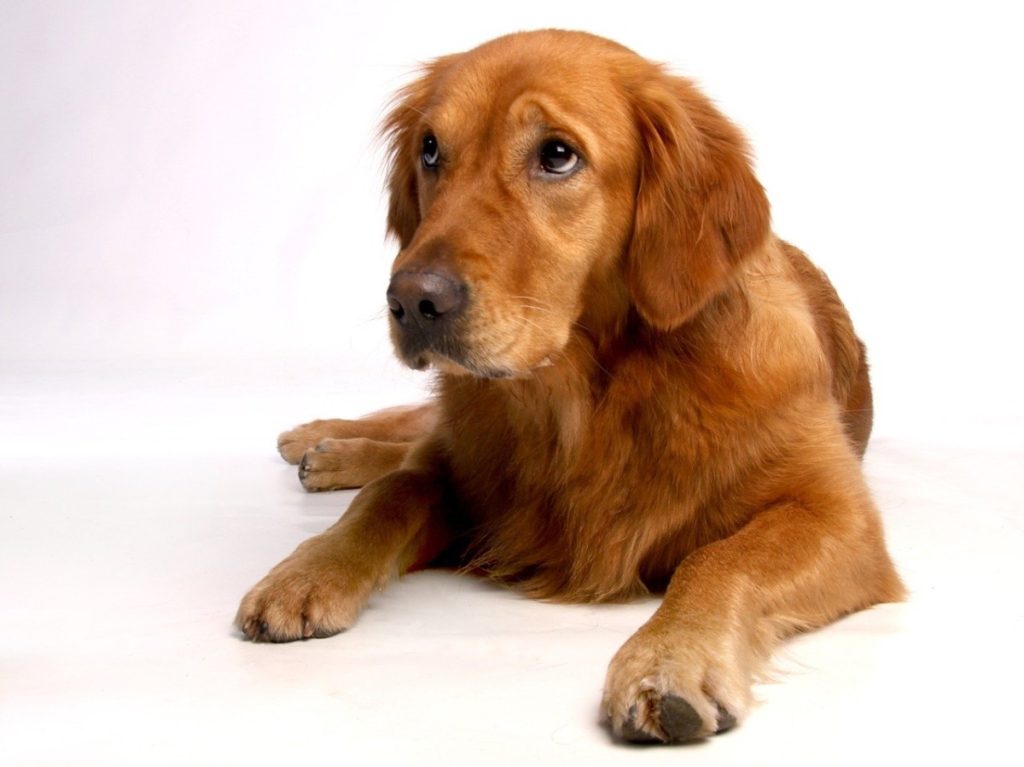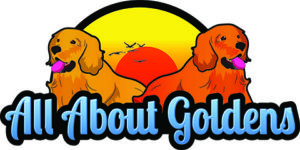
Have you noticed your golden retriever licking or chewing their paws excessively? Golden retrievers are notorious for licking and chewing their paws. So why do golden retrievers chew on their paws?
The Answer is.
Golden Retrievers chew their paws mainly due to allergies. Other reasons your golden may chew on their paws is boredom, OCD behavior, or simple grooming. Let’s go over some reasons why they develop this habit and how to fix it.
Table of Contents
Allergies
Golden Retrievers are prone to allergies and often develop hotspots due to the scratching and licking. If you suspect your golden has allergies, you will need to visit the vet to determine if the allergies are environment or food related.
At a certain time of the year, your golden could be experiencing seasonal allergies just like humans. When the mold, pollen, or dust are a problem for you, it is possible your golden could also be experiencing allergies. These allergies typically make us humans have red, watery eyes or run for the tissue box. This shows up as sneezing in humans; for a dog, it shows up as itchy skin, and this can affect them from head to toe!
Food allergies could also be the culprit for your dog being extra itchy. You can try changing your dog’s food. The type of protein is the most common reason dogs have food allergies. If an over the counter food does not work for your dog’s allergies, a vet can give you a prescription for food that is specially made for food allergies.
If your dog is licking and chewing all four paws its likey they are experiencing some sort of allergy.
Boredom
Sometimes your golden’s paw chewing behavior may be out of boredom. They can develop the habit of licking and chewing their paws out of boredom. Just as they chase their tail repeatedly out of boredom licking their paws can turn into entertainment for them.
Does your dog seem bored?
Is your dog also chasing his tail?
During the day, I’ve noticed him showing interest in his paws along with chasing his tail. So it leads me to think he is just bored; he’s a year old and has discovered he can chew and lick his paws, and it will entertain him just like chasing his tail does.
Another key factor to consider is if your pup only chews and licking their front paws its likey they are bored.
If boredom is the reason for your dog’s behavior, try to spend some extra time in the yard or longer walks: a new exciting chew or puzzle toy. You can also rotate toys to keep them “new” for your dog. When you catch your dog in the act of chew their paws, offer the new chew toy instead.
OCD
You dogs boredom could turn into an OCD habit of chewing their paws. The constant licking and chewing of the paw or legs can lead to lick granulomas, sores, or bacterial dermatitis.
It’s important to try and be consistent with diverting your dog’s attention onto something else to avoid further skin issues. Again, you will want to provide a new chew toy or bone to take their attention off the chewing and licking of the paw and legs.
Grooming
Your dog may be just doing some daily grooming. It’s good to keep watch and make sure they are not developing a habit or experiencing allergies. If they are grooming a little more than usual, check between the toes to make sure there is nothing there bothering them. A thorn or sticker could be the reason a dog has suddenly started chewing at a paw. Also, keeping the hair groomed on the bottom and between the paw pads will help prevent excessive chewing and grooming.
Tools For Grooming Feet: Curved Shears, Thinning Shear
Red Stained Fur
If your dog is licking their paws pretty regularly, you will also notice the fur in between their toes turning red. This doesn’t necessarily mean they have a sore. The excessive licking has caused the fur to turn red due to a compound (porphyrin) found in the saliva. Porphyrins are also found in feces, urine, and tears. Hence why some white dogs have red stain fur around their eyes. This happens with the body breaks down red blood cells producing the iron-containing molecules porphyrins.
Dog Whitening Shampoo
Brown Stained Fur
If your dog has more of a brownish stain color on fur this is often caused by skin yeast infection. (Yeast Malassezia) The same yeast that causes an ear infection. This is also accompanied by a pungent odor and oozing of the skin.
This is usually the end result of allergy licking or boredom licking due to the fur and skin saying wet and moist.
I have experienced the dreaded brown fur stain with my golden. Primarily due to daily swimming, which has lead to ear and skin infections. We have had success in treating these at home by bathing him as soon as we notice an issue with an antibacterial and anti-fungal shampoo. The Veterinary Formula Clinical Care Medicated Shampoo has worked well for treating skin infections at home.
Recommended Read: Skin Yeast Infection In Golden Retriever Dogs
Solutions
If your dog is experiencing allergies, it’s important to figure out precisely what is causing the extra itching. Figuring out the cause is step one in solving the problem. Your pup will likely need a trip to the vet for some testing to determine the allergen. If the chewing is related to boredom or turning into an OCD habit, provide your dog with some extra playtime, longer walks better and new chew toys. Keeping pups paws trimmed and groomed to can help prevent excessive chew and pull on fur between paw pads.
To remove red stains from your golden retriever’s paw you can use hydrogen peroxide. Leave on for 30 seconds then rinse with lukewarm water.
Suppose your dog has gotten to the point of developing a skin yeast infection. You can try a medicated shampoo. The key to preventing yeast infections is keeping your dog dry. If he continuously licks his paws, they will stay wet or moist, creating the perfect breeding ground for a skin infection. If your dog is experience recurring ear or skin yeast infections they will need to see a vet.
